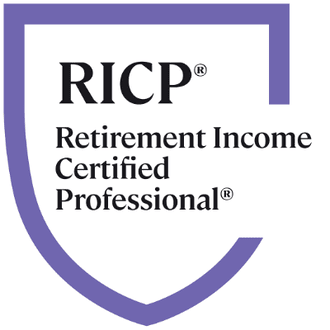
Crafting the Optimal Withdrawal Strategy For Early Retirement
Case studies are an excellent way to learn about strategies for withdrawing your money in retirement. Remember that this case study is for illustrative purposes, and you should talk to a financial advisor to get a customized plan for your situation.
In this case study, a married couple is planning for early retirement at ages 55 and 50, with estimated monthly expenses of $4,000. They have a well-diversified portfolio spread across tax-deferred, taxable, and tax-free accounts, including a Health Savings Account (HSA). Here’s an example of a strategic plan to help them meet their retirement goals while optimizing tax efficiency and minimizing tax penalties.
Financial Overview:
- Traditional IRA (50-year-old): $900,000
- 401(k) (55-year-old): $300,000
- Taxable brokerage account: $200,000 (with long-term capital gains)
- Savings account: $100,000
- Roth IRAs: $150,000 each
- HSA: $60,000
- Monthly expenses: $4,000 (or $48,000 annually)
Strategy #1: Early Retirement and Bridging the Gap to Age 59½
Because most retirement accounts (like the Traditional IRA and 401(k)) impose a 10% penalty for withdrawals before age 59½, careful planning is needed. The couple can use various accounts to fund their lifestyle while taking advantage of IRS rules to access retirement funds early without penalties. For early retirees, the two areas that need the most consideration are healthcare since, most of us get healthcare from our jobs. The second is taking money retirement plans before 59½ without a 10% early withdrawal penalty.
Step 1: Draw from the Savings and Taxable Brokerage Accounts (Years 1-2)
Start by using non-retirement assets to cover living expenses for the first few years of retirement.
- Savings account: Use the $100,000 in the savings account to cover expenses for the first two years.
- Taxable brokerage account: After the savings are depleted, withdraw from the taxable brokerage account, which will likely incur lower long-term capital gains taxes, which could potentially not be taxable if their income is low enough.
Step 2: 401(k) Rule of 55 (Spouse 1, Age 55-59½)
The 55-year-old can begin making penalty-free withdrawals from their 401(k) under the Rule of 55, which allows workers who leave their jobs after age 55 to access 401(k) funds without early withdrawal penalties. However, ordinary income tax still applies. To take advantage of the Rule of 55, the money can only come from the 401(k). Do not roll the money into an IRA, as the rule does not apply to IRAs.
- Once the savings and taxable brokerage accounts run low, the couple can supplement their income by drawing from the 401(k).
- Keep withdrawals low to avoid pushing themselves into a higher tax bracket. Careful tax planning is required for this step.
Step 3: IRS 72(t) SEPPs for Traditional IRA (Spouse 2)
To avoid penalties for early withdrawals from the 50-year-old’s Traditional IRA, they can set up Substantially Equal Periodic Payments (SEPPs) under IRS Rule 72(t).
- SEPPs: The 50-year-old can begin taking penalty-free withdrawals from the IRA using the 72(t) rule. The payments must continue for at least five years or until the individual turns 59½ (whichever is longer). The amount is based on life expectancy and must be consistent each year.
- These payments could cover a significant portion of the couple's expenses while they wait to access other retirement accounts penalty-free. The problem with the 72(t) is that you need to take the SEPPs out each year, and some years, you will need more money and others, perhaps less, which cannot be changed with the plan. If you make a change, a 10% penalty is assessed on the entire amount.
Step 4: Leverage the HSA for Healthcare Costs
As noted, healthcare is a major expense in retirement, especially for early retirees who aren’t yet eligible for Medicare. The couple’s Health Savings Account (HSA) is an excellent tax-advantaged tool for covering healthcare costs in retirement.
- Tax benefits: The HSA offers triple tax advantages—contributions are tax-deductible, earnings grow tax-free, and withdrawals for qualified medical expenses are tax-free.
- They can use their HSA to pay for health insurance premiums (if enrolled in COBRA or another eligible plan) and other qualified medical expenses.
- By preserving the HSA for medical expenses, they reduce the need to withdraw from other accounts, preserving tax-deferred and taxable funds for living expenses.
- You cannot use HSA money to pay for healthcare premiums on the Health Insurance Marketplace. But you can use them for Medicare premiums.
Strategy #2: Post Age 59½: Traditional IRA Withdrawals
Once both spouses reach 59½, they can begin taking penalty-free withdrawals from their tax-deferred accounts.
- Traditional IRA: The 50-year-old can stop SEPPs and take normal withdrawals from the Traditional IRA based on their income needs.
- Roth IRAs: Delay withdrawals from the Roth IRAs to let them continue growing tax-free. These accounts are ideal for later retirement when other income sources are taxed more heavily.
Strategy #3: Managing Taxes and RMDs
At age 75, the couple will face Required Minimum Distributions (RMDs) from their 401(k) and Traditional IRA. Planning now can help minimize taxes later:
- Roth conversions: Consider converting portions of the Traditional IRA to a Roth IRA between ages 59½ and 75 to lower future RMDs. This helps spread out taxes and provides tax-free income from the Roth later.
- Continue drawing from taxable accounts: Continue using funds from the taxable brokerage account to manage taxable income in lower tax brackets.
Strategy #4: Roth IRAs and HSA as Long-Term Tax-Free Sources
- Roth IRAs: These accounts can serve as a tax-free safety net for unexpected expenses later in life or as a source of tax-free income if other taxable sources have been exhausted.
- Legacy planning: If the couple doesn’t need the Roth IRAs during retirement, these accounts can pass to heirs tax-free, making them excellent tools for wealth transfer.
- HSA for long-term care: As they age, the couple can preserve their HSA for potential long-term care expenses, which can be substantial and are also considered qualified expenses for tax-free withdrawals.
Final Considerations
- Social Security: The couple should delay claiming Social Security as long as possible—at least until full retirement age at 67, and ideally until age 70. This will increase their future benefits, reducing the need for larger withdrawals from retirement accounts.
- Healthcare: Healthcare costs, including pre-Medicare coverage, should be planned carefully, and the HSA will be a significant asset in covering these expenses.
Conclusion
This withdrawal strategy allows the couple to retire early while maximizing their savings and minimizing taxes and penalties. By utilizing the 72(t) rule for the Traditional IRA, taking advantage of the Rule of 55 for the 401(k), and strategically using their HSA for healthcare costs, the couple can maintain financial stability in the early years of retirement. Later, they can shift to tax-deferred account withdrawals while using Roth conversions to reduce tax burdens. The Roth IRAs and HSA provide long-term tax-free options, ensuring flexibility and financial security throughout retirement. Contact me on the page below if I can look at early retirement withdrawal strategies.
*This content is developed from sources believed to be providing accurate information. The information provided is not written or intended as tax or legal advice and may not be relied on to avoid federal tax penalties. Individuals are encouraged to seek advice from their own tax or legal counsel. Individuals involved in the estate planning should work with an estate planning team, including personal legal or tax counsel. Neither the information presented nor any opinion expressed constitutes a representation of a specific investment or the purchase or sale of any securities. Asset allocation and diversification do not ensure a profit or protect against loss in declining markets.





